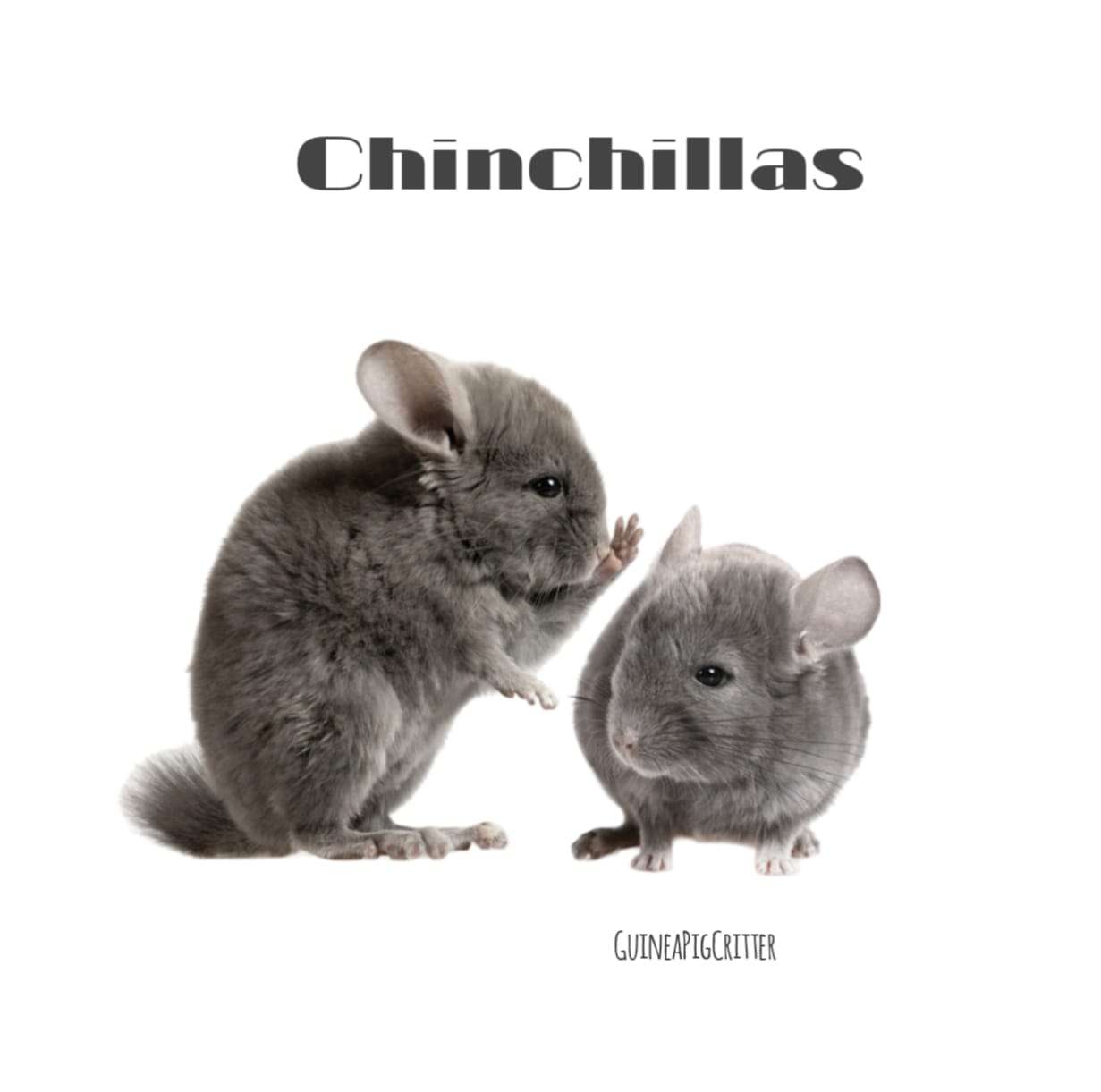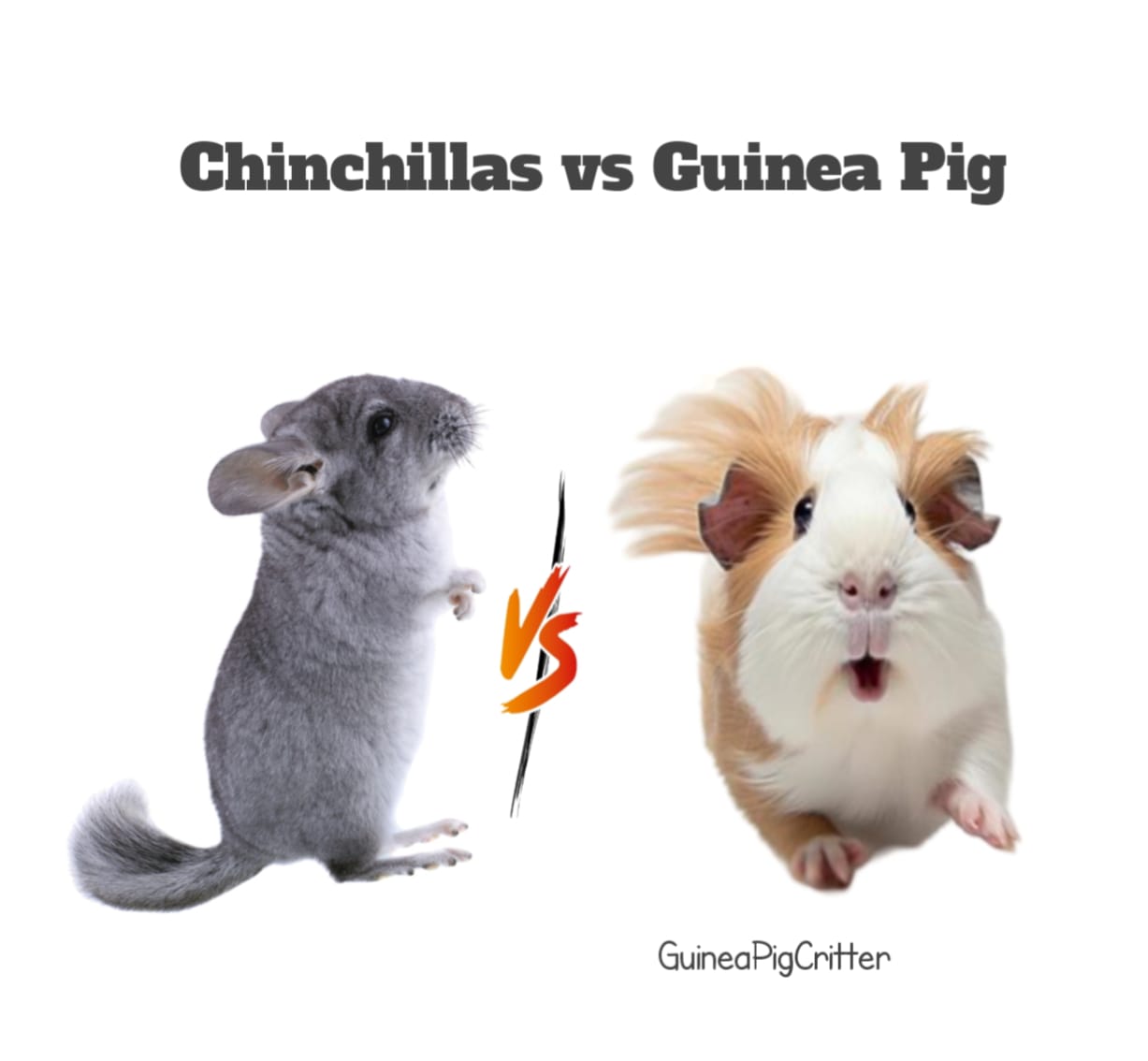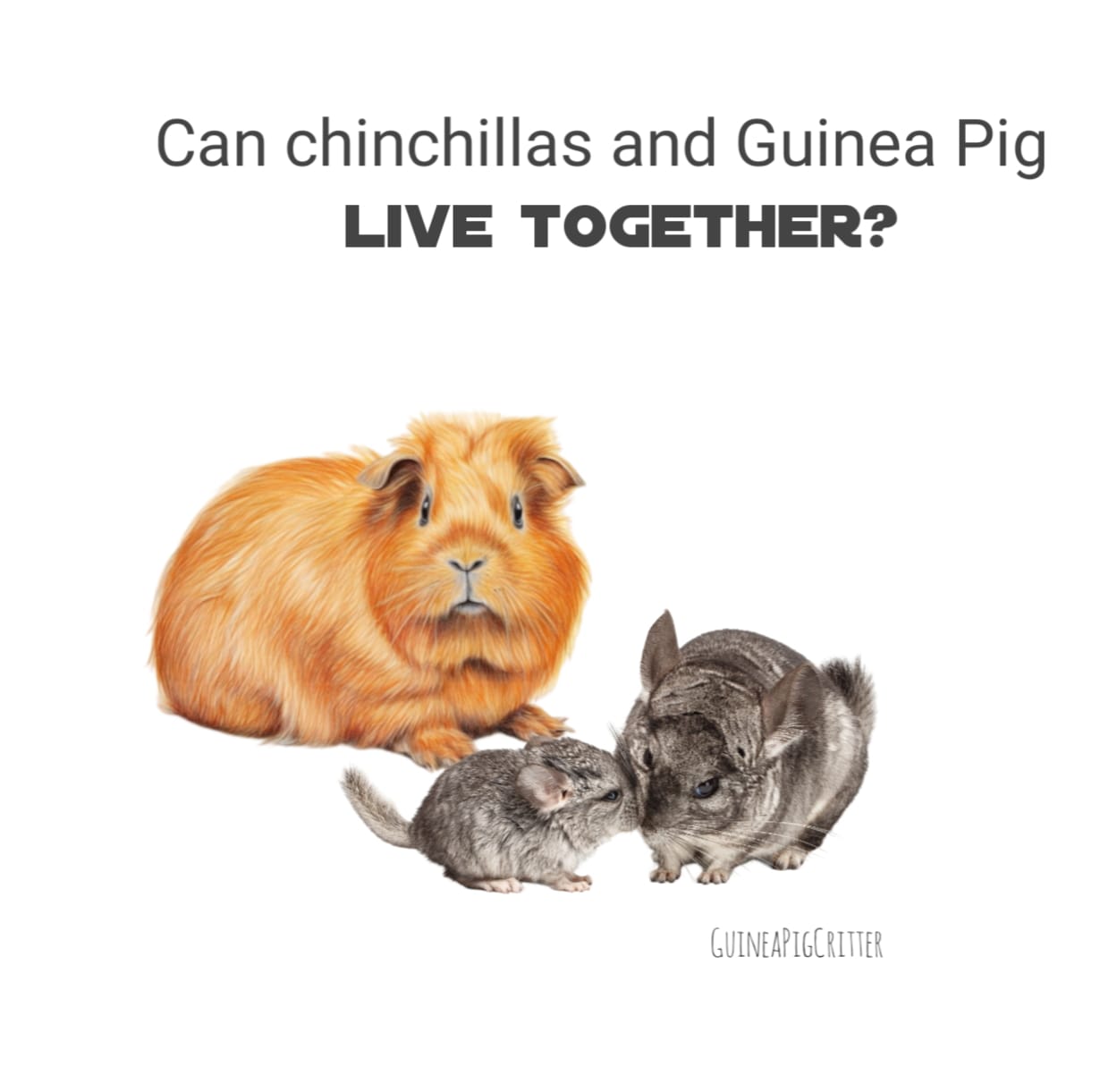Introduction to Guinea Pigs and Chinchillas Most importantly, both guinea pigs and chinchillas share a lot of characteristics in common – they are small sized, herbivorous animals with gentle personalities and are small animals that have a great appeal to be kept as pets. Still, for all these complementary traits, they are quite different animals and as a result, their requirements as well as their behavior are not the same.
In terms of reducing space and conserving resources, the idea of housing various small pets together can appear to be beneficial in providing each pet with companionship. However, conflict may arise when different animal species are kept together as each comes with different requirements and features. In this guide, we’ll cover everything you need to know about keeping chinchillas and guinea pigs—two furry companionship pets that have several differences—looking more closely at their behaviors, biological differences, dietary preferences, social habits, veterinary issues and opinions as to whether the two species can cohabitate.
Guinea pigs are small rodents that originated in South America and have seen domestication for thousands of years. With coordinated efforts to make them sociable and adjusting their vocal tendencies, guinea pigs are mostly maintained in colonies. No-frills and fuss are attached while maintaining these animals with moderate housing requirements along with daily replenishment of Vitamin C on a regular basis and sufficient grooming.
Seeing as how chinchillas are native to the Andes Mountains, their soft and thick furs have become an adaptation to the cold conditions. Chinchillas are active and playful and like to climb around and explore, but they can only thrive within certain temperature and humidity ranges due to their environmental restrictions.
Let’s examine whether these differences, in particular, make it feasible or perhaps impossible for chinchillas and guinea pigs to coexist.
check this post:-Why is my guinea pig vibrating?
Contrasting Natural Environments and Activities
This insatiable desire to make it bright finds even its exponents in the animal kingdom. Therefore, knowing every individual’s natural habitat and behavioral tendencies would help in ensuring that they are kept in an appropriate space. Here’s how it goes in terms of their own countries of origin and the pattern of behavior they’ve developed over time.
Guinea Pig Behavior and Habitat
Guinea pigs inhabit South American grasslands and tend to live around the burrows that are closer to the ground. They are diurnal animals with the most activity during the day. Like humans, guinea pigs are social and are able to emit a range of sounds and require the company of others for protection and security. Due to being gentle animals, they like to be around people as well as other guinea pigs.
Chinchilla Behavior and Habitat
Chinchillas are native to the Andes Mountains, and they occupy a specific altitude and cool climate. Their fluffy thick fur keeps them warm; however, it can also be the reason for overheating. This, however, is not the case with guinea pigs, as chinchillas are crepuscular and are most active in twilight hours. Since they enjoy heights, this inclines them to climb and seek a vertical space.
Key Takeaway
Indeed, chinchillas have a completely different lifestyle from the guinea pigs. For example, the habits of guinea pigs doting on a grounded and social structure tremendously differ from a Chin chillax which is anti-social and does a lot of climbing in a moderate temperature environment. This difference creates a window of opportunities for them to conflict if housed together.
Dietary Needs and Differences
Pets can’t be taken lightly when it comes to diet and plenty of dietary requirements for a chinchilla will be extremely different from a guinea pig.
Guinea Pig Diet
As herbivores, guinea pigs have a very high need for Vitamin C because they cannot synthesize it. The average diet of a guinea pig comprises fresh vegetables, hays of good quality and pellets that are Vitamin C enhanced. Parsley, kale and bell pepper are rich in this vital nutrient and leafy greens are also. Insufficient Vitamin C in guinea pigs may result in scurvy, which affects their joints and bones.
Chinchilla Diet
Hay still forms an important constituent, and chinchillas also need a fibrous diet, but they do not withstand well fresh fruits and vegetables for their digestive system is very sensitive. Eating a lot of fresh food makes them prone to bloating or digestive upset. Their daily ration should include paleways hays and special chinchilla pellets replacing seeds, while rose hips and dried herbs can be given, but only as intermittent dry food in small amounts.
Risks of Cross-Feeding
However If they live in the same enclosure, the chances of dietary confusion are quite high. It is likely that guinea pigs would want to eat chinchilla feed and vice versa, which can result in an upset stomach or undernutrition. If these easily explainable differences are taken into account, it is unlikely that a common feeding area would be appropriate and safe for these two species.
Housing and Environmental Requirements
Species-specific considerations are necessary in making the appropriate habitat t for pets and its significant for their health and happiness. The following are some of the common issues that arise when comparing the housing and environmental needs of each type of pet.
Chinchilla Temperature Difference with Guinea Pigs
Since chinchillas have thick fur that causes them to overheat easily, cooler temperatures which are less than 70°F are ideal for them. However, guinea pigs are okayed duke with moderate temperatures between around 65-75. Combining the two animals may endanger one of the animals: when the temperature is set low to accommodate the chinchilla, the guinea pig may be too cold, while higher temperatures for the guinea pig may trigger the chinchillas.
Space Requirements
Chinchillas require vertical and multi-tiered cages for climbing as well as a horizontal area for jumping since they are always active. The exact opposite is true for guinea pigs; they favor a large cage area that possesses a lot of ground area, which they use to move around and hide, but they do not require any elevation or extra floor space that is above the sea level.
Bedding Preferences
There are two different pets in the form of guinea pigs and chinchillas, and as such, they have different needs when it comes to their bedding. For instance, guinea pigs can live on softer fleece materials while chinchillas do not have that flexibility and need their bedding to have no dust for the protection of their slim respiratory system. Using the wrong bedding for either pet can lead to respiratory infections or skin irritation.
Key Takeaway
Animals require different climatic conditions for which it is almost impossible to design a joint habitat that will be satisfactory to both. The end result is that one pet will obvious be compromised as they won’t be able to adapt to the dwelling conditions of the other species.
Health and Safety Concerns
Bringing together two species that differ in health needs can lead to major complications with regards to their health and even the mental aspect.
Disease and Parasite Risks
Respiratory infections can be present in both guinea pigs and chinchillas, and there are some parasites that effect both animals. Stress from incompatible co-housing can also cause a compromise in their immune systems which increases the chances of infections.
Stress and Behavioral Health If guinea pigs were to be housed together with chinchillas, the perceived activity levels and social behaviors of these animals may cause stress. Bloody disturbances in a chinchilla’s rest may be brought about by an aggressive guinea pig during daytime social hours. Fur-chewing, an obsessive behavior common in chinchillas, or other stress-induced annihilating behaviors, may as well be observed in guinea pigs with reduced appetite. Physical Safety Furthermore, one may experience pain as a result of accidents.
Chinchillas might literally step on or run into a guinea pig causing harm as the latter accomplish their activities more vigorously. Wild chinchillas acquiring the habit to chew anything and everything can consume refuse from a guinea pig’s belongings as well as chinchilla’s porn. Social Compatibility and Interaction between Guinea pigs and chinchillas must largely deal eaten entirely social. Social Needs of Guinea Pigs Terrific, the guinea pigs sound very social, and for guinea pigs, community living must be preferred as they keep sounding off. As chinchilla:
Whether or not hygienic practices taken into account, development is stunted regardless, except it doesn’t seem to be the digital age.
If stressed or bored, guinea pigs will have no reluctance to contact others physically to also break the connection affectionate social bonding.
Social Behavior of Chinchillas About the chinchilla’s social behavior there are contrasting views. Given their reportedly rather affectionate nature, it is often suggested that they make rather good companions. Chinchilla people however make sure their chinchillas will have none of it. Chinchillas are social animals and live in groups, but they are also independent and often loners amongst other animals. Hens are more friendly and social than chinchillas.
A chinchilla would see a guinea pig as a rude neighbor rather than a friend. Hens may not understand that or react well which could lead to shenanigans. Chinchillas do have their ways of communication. But they might not enjoy the social habits of a guinea pig. Using the example of guineas, as already mentioned miscommunication and aggression are not uncommon.
Options of Co-habitation
Should you consider owning both guinea pigs and chinchillas, it would be ideal to provide for two unique living spaces. Here are some practical alternatives:
Individualized Enrichment: Provide each and every animal with enrichment appropriate to their species, for example climbing shelves for chinchillas and hiding places for guinea pigs.
Side-by-Side Housing: One more option having their enclosures next to each other so that they can be close-to each other without being in the same space. This arrangement meets their need to be inquisitive without the anxieties of being forced to interact.
Conclusion:
In conclusion, the prospect of keeping chinchillas and guinea pigs together may seem appealing but looking into the unique requirements of these animals makes keeping them together inappropriate. The variations in nutrition, habitat, sociability, and even health factors means one or even both of the pets would be in discomfort and even pain because of the need to coexist.
To safeguard the welfare of both the animals, it is best that a different, species effective environment is provided to both. By acknowledging their different requirements, you will make it possible for them to have a relaxed and panicky free life.


